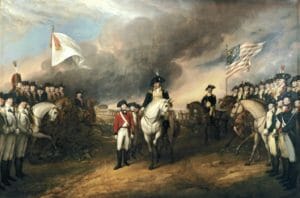Money for Nothing
The news that the Treasury will once again sheepishly release a small batch of dollar coins raises the question: Why are Americans so hung up on paper money when countries like Britain and Canada have enjoyed the benefits of coinage for years? Don't scoff -- the Government Accountability Office estimates potential savings at $500 to $747.5 million annually.
The news that the Treasury will once again sheepishly release a small batch of dollar coins raises the question: Why are Americans so hung up on paper money when countries like Britain and Canada have enjoyed the benefits of coinage for years? Don’t scoff — the Government Accountability Office estimates potential savings at $500 to $747.5 million annually.
Your support matters…Slate:
There’s no reason the United States shouldn’t be using dollar coins right now. Canadian and Australian dollars are made of metal. So are the British pound sterling and the euro. That’s because coins are vastly more durable than paper money. Though a coin costs about three times as much to produce as a bill, it will circulate for an average of 30 years, whereas a dollar bill lasts 22 months, and for the last few of those, has all the charm of a grimy, germy handkerchief.
The United States General Accounting Office says we’ll save $500 million a year in production costs if we shift to coins; another GAO document puts the savings even higher, at $747.5 million. The catch is, people have to use them. Surveys suggest that the public prefers keeping the bill, by margins that vary widely from poll to poll, but the chief hold-up is habit. Shoppers won’t use dollar coins till they see businesses taking them; businesses won’t use them until banks give them out routinely; and the banks aren’t going to invest in infrastructure changes, like new coin-counting machines, until they see the public using the coins. Everyone’s waiting for someone else to move first.
Coins would be accepted in a matter of months, maybe weeks, if Congress phased out the dollar bill. (The Treasury does not set policy on these matters, merely carrying out congressional orders.) Instead, the Treasury just keeps stamping out coins, asking us politely to use them.
In the early ’70s, the Eisenhower dollar — the same size as the preceding century’s silver dollars — arrived, failing to circulate much because it was huge and heavy. (It’s a remarkable artifact of the space race, however: One side shows Ike’s bald noggin, and the other has the American eagle setting its talons down on the moon.) The next push came in 1979, with the infamous Susan B. Anthony dollar. As every American who was sentient that year remembers, it failed because its size, thickness, and reeded edge made it far too easy to mistake for a quarter. Tellers and cashiers immediately began making 75-cent errors. It was a fiasco, and a perfect symbol of the Carter administration: an eminently reasonable policy hamstrung by inept execution.
Independent journalism is under threat and overshadowed by heavily funded mainstream media.
You can help level the playing field. Become a member.
Your tax-deductible contribution keeps us digging beneath the headlines to give you thought-provoking, investigative reporting and analysis that unearths what's really happening- without compromise.
Give today to support our courageous, independent journalists.





You need to be a supporter to comment.
There are currently no responses to this article.
Be the first to respond.